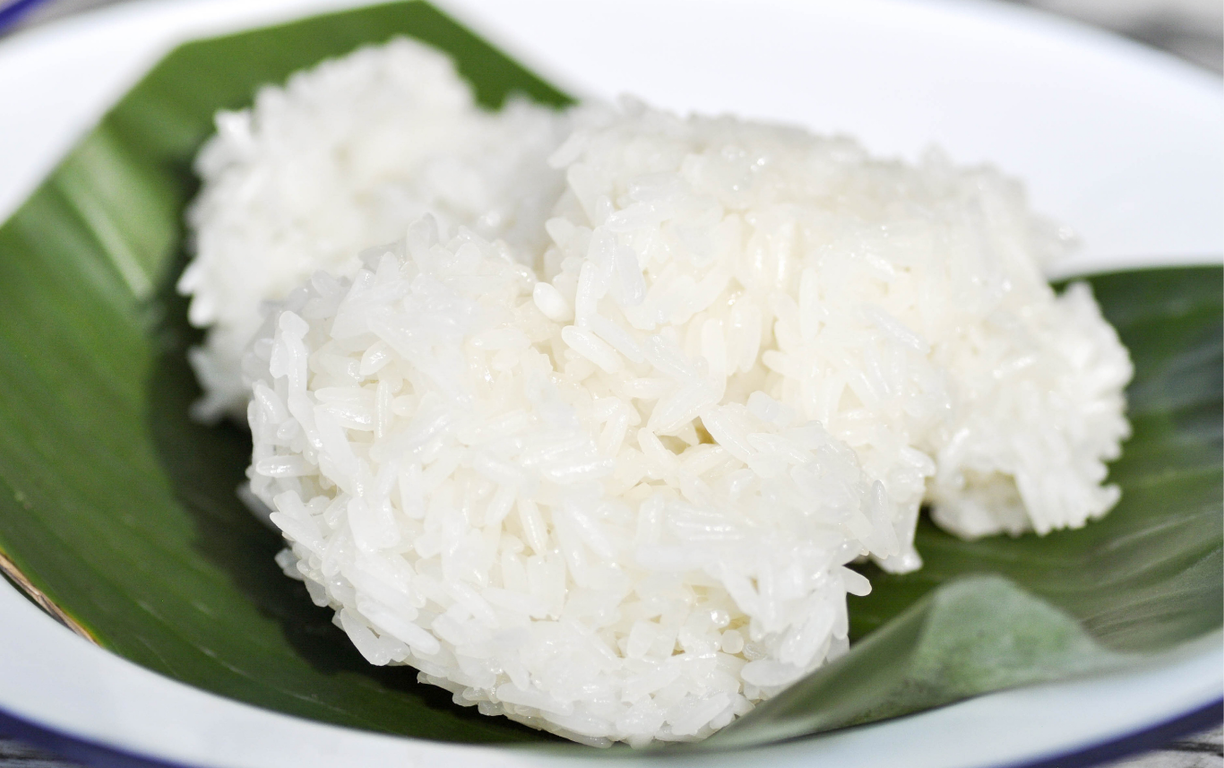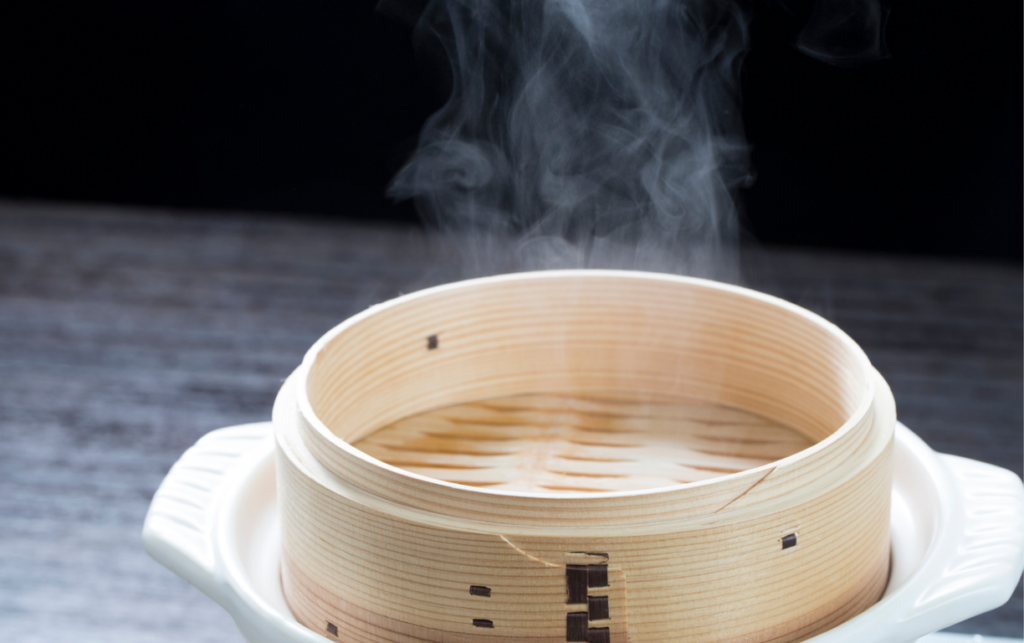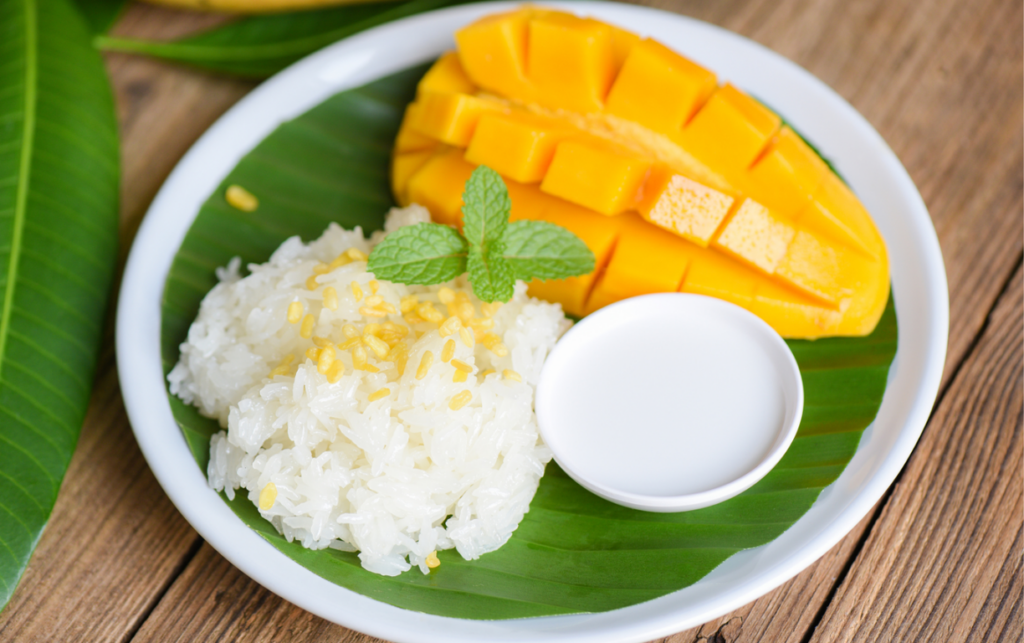Physical Address
304 North Cardinal St.
Dorchester Center, MA 02124
Physical Address
304 North Cardinal St.
Dorchester Center, MA 02124

Cooking sticky rice can be a delightful experience, and choosing the right method makes a difference. Using a bamboo basket steamer can enhance the flavor and texture, while a rice cooker offers speed and convenience. Each approach brings unique benefits that can fit various cooking styles and situations.

In a bamboo basket, the rice absorbs steam evenly, producing a chewy texture that many love. On the other hand, a rice cooker simplifies the process, allowing you to focus on other aspects of your meal while your rice cooks to perfection. Understanding these differences can help you decide which method suits your needs and preferences.
Whether you are preparing a traditional dish or just trying something new, mastering sticky rice is key. With the right knowledge, you can impress family and friends with your cooking skills.
Sticky rice, also known as glutinous rice or sweet rice, has some distinct characteristics that set it apart from regular rice. This unique type of rice plays an important role in various Asian cuisines, valued for its chewy texture and versatility in cooking.
Glutinous rice has a high starch content, specifically amylopectin, which gives it its sticky quality. Unlike jasmine rice, which remains fluffy when cooked, sticky rice clumps together, making it perfect for certain dishes.
When you prepare sticky rice, it is crucial to soak it overnight. This process helps soften the grains and enhances its ability to absorb flavors. After soaking, rinsing the rice until the water runs clear removes excess starch, preventing it from becoming overly gummy during cooking.
Its chewy texture makes sticky rice suitable for various dishes, including desserts and savory meals. It can be formed into cakes or served alongside flavorful stews and curries.
Sticky rice is a staple in many Asian cultures, particularly in Southeast Asia. In countries like Thailand, it’s often used in traditional dishes like mango sticky rice, where the rice pairs beautifully with fresh fruit and coconut milk.
In addition to its role in desserts, sticky rice is also consumed with savory foods. In Laos, it is a major part of the diet and is often served with grilled meats and spicy dips. The versatility of sticky rice allows it to be enjoyed in various forms, including steamed or grilled, enhancing the dining experience.
You can find sticky rice served at street vendors and restaurants, highlighting its cultural significance and widespread popularity. The ability to complement both sweet and savory flavors makes it a key ingredient in Asian cuisine.
Preparing sticky rice involves specific steps that ensure you achieve the right texture and flavor. Proper rinsing and soaking of the rice are essential in achieving the desired stickiness. After soaking, draining and getting ready for cooking are also critical.
Start by measuring your sticky rice. A common amount is about 2 cups for several servings. Rinse the rice thoroughly in cold water. This step removes excess starch, which can make the rice too sticky or gummy. Continue rinsing until the water runs clear.
Once rinsed, soak the rice in fresh water. Ideally, let it soak for at least 4 hours or overnight. The soaking process hydrates the grains, allowing them to steam evenly later. If you’re short on time, a 30-minute soak may suffice, but longer soaking yields better results. After soaking, check the texture; it should feel slightly soft.
After soaking, drain the rice using a fine-mesh strainer. Ensure that all excess water is removed. This step prevents sogginess during cooking.
Now it’s time to prepare your steamer, whether a bamboo basket or a rice cooker. If using a bamboo basket, line it with cheesecloth to prevent rice from falling through. Fill your pot with water and bring it to a boil. Place the bamboo basket on top, making sure it’s not submerged in water. Your rice is now ready for steaming.
Cooking sticky rice in a bamboo basket is a classic technique that enhances the flavor and texture of the rice. This method links you to traditional practices and offers a unique taste experience.
Start by choosing the right bamboo steamer basket. Look for a basket specifically designed for sticky rice. This type helps the rice cook evenly and absorbs the bamboo’s natural flavors.
Before cooking, soak the sticky rice in water for several hours or overnight. This critical step helps the grains absorb moisture. After soaking, rinse the rice thoroughly.
Next, line the bamboo basket with cheesecloth or banana leaves. This prevents the rice from sticking to the basket during steaming. Make sure to leave some overhang to cover the rice later.
To steam the rice, fill a large pot with water, ensuring the water level is below the basket when placed on top. Bring the water to a vigorous boil.
Once boiling, place the prepared bamboo steamer on top of the pot. Spread the soaked and drained rice evenly in the basket. Cover your bamboo steamer with the overhanging cloth or leaves, sealing in the steam.
Steam the rice for about 20 to 30 minutes. Check for doneness by tasting a grain. It should be tender and sticky. During the steaming process, keep the water boiling steadily to maintain consistent heat.
Once the rice is cooked, carefully remove the basket from the pot. Allow the rice to rest for a few minutes. This step helps any excess moisture redistribute, ensuring perfect texture.
To prevent stickiness, gently fluff the rice with a fork or paddle. Serve right away or keep it warm in the bamboo basket. If you have leftovers, store the rice in an airtight container. Reheat using steam to maintain its sticky texture.
Using this traditional method allows you to enjoy authentic sticky rice with a distinct taste and consistency.
Using a rice cooker is a convenient method to prepare sticky rice. This appliance simplifies the process, allowing for consistent results without constant monitoring. Here’s how to set it up and cook the rice effectively.
To start, choose the right type of rice. Make sure you have glutinous rice, which is essential for achieving that sticky texture. Rinse the rice thoroughly under cold water to remove excess starch. This step is crucial for preventing overly sticky rice.
Next, add the rice to the cooker. The right water-to-rice ratio is vital. A common guideline is 1.5 to 2 cups of water for every cup of rice. You may need to adjust this based on your cooker’s instructions or personal preference.
Once prepared, close the lid securely. Select the appropriate setting for cooking rice. Many rice cookers have a specific option for sticky rice, making this part straightforward. If yours doesn’t, just use the regular rice setting.
After starting the rice cooker, avoid opening the lid during the cooking process. This helps maintain the right temperature and steam inside, crucial for proper cooking. Cooking times may vary, but most rice cookers will automatically switch to a keep-warm setting when done.
Once the rice is cooked, allow it to rest in the cooker for about 10-15 minutes. This resting period lets the rice firm up and enhances the sticky texture. After resting, use a wooden or bamboo spatula to fluff the rice gently.
Serve the sticky rice warm. This method offers a hands-off approach and can yield delicious results. You can check specific tips for rice cookers to perfect your sticky rice method from Cooknight or Hungry Huy.
When choosing how to cook sticky rice, consider factors like texture, convenience, and the best method for your needs. Each method offers unique advantages that can enhance your cooking experience.
Cooking sticky rice in a bamboo basket often yields a more authentic texture. The steaming process allows the rice to absorb moisture gradually, resulting in a soft but slightly chewy bite. This method enhances the natural flavor of the rice.
In contrast, using a rice cooker can also produce fluffy rice but may not replicate the same chewy texture. Rice cookers often boil the rice rather than steam it, which changes the final texture. Therefore, if you prioritize texture and flavor, opting for a bamboo steamer might be preferable.
Using a rice cooker is typically more convenient. With a rice cooker, you can set it and forget it, allowing for multitasking while your rice cooks. Most models require minimal setup and automatically adjust cooking times, making them ideal for busy schedules.
On the other hand, cooking sticky rice in a bamboo basket requires more effort. You’ll need to soak the rice beforehand and carefully arrange it in the steamer. This method takes more time and attention, which may not suit everyone’s lifestyle.
To achieve the best results, soaking the sticky rice for at least 4-6 hours is essential. You can use a bamboo steamer for an authentic texture. First, wipe the inside of the steamer with a damp cloth. Then, arrange the soaked rice evenly in the basket and place it over boiling water.
Alternatively, if you opt for a rice cooker, using the basket method enhances the flavor while maintaining convenience. After washing the rice to remove excess starch, place it in the rice cooker’s basket. Follow the manufacturer’s instructions for steaming to get the best results.

There are alternative methods to prepare sticky rice besides using bamboo baskets or rice cookers. Exploring these options can help you achieve perfect sticky rice in different ways.
Using a pressure cooker is a quick method to prepare sticky rice. Begin by rinsing 2 cups of sticky rice until the water runs clear. Soak the rice for at least 4 hours or overnight for best results.
After soaking, drain the rice and place it into the pressure cooker with 1 cup of water. Close the lid securely and set it to high pressure. Cook for about 10 minutes and then allow the pressure to release naturally for another 10 minutes before opening the lid. The result is soft, sticky rice that holds together well and is perfect for your dishes.
Microwaving sticky rice is another convenient technique. Start by rinsing 1 cup of sticky rice until the water is clear. Soak it in water for 30 minutes. After soaking, drain the rice and transfer it to a microwave-safe bowl.
Add 1 cup of water to the bowl, then cover it with a microwave-safe lid or plastic wrap. Microwave on high for 10 minutes, then let it sit for another 5 minutes without disturbing. This method produces fluffy and sticky rice in a fraction of the time compared to traditional steaming.
Serving sticky rice is an art that enhances the dining experience. You can choose traditional methods or explore creative ways to present this delicious dish. Each approach adds a unique touch to your meal.
In many Asian cultures, sticky rice is served in specially woven bamboo baskets. These baskets keep the rice warm and maintain its soft texture. When ready, use a spoon or a spatula to scoop the rice directly from the basket.
You might also see sticky rice wrapped in banana leaves or pandanus leaves. These leaves not only add flavor but also create an attractive presentation. The wrapped rice can be served alongside traditional dishes, making your meal visually appealing.
When served at home, it’s common to place small portions of sticky rice in individual serving bowls. This allows guests to enjoy the rice without needing to dig into the communal basket.
To elevate your sticky rice serving, consider using different types of plates or bowls. For example, ceramic dishes or wooden platters provide a rustic or artisanal look.
You can also stack small portions of sticky rice neatly on a plate, garnished with herbs or edible flowers for a touch of color. This method transforms plain rice into a centerpiece.
Another idea is to serve sticky rice in decorative bamboo containers. This not only showcases the rice but also pays homage to its cultural origins. Drizzling a bit of coconut milk over the rice can enhance its flavor and make it visually striking.
Experimenting with these presentation methods can impress your guests and make mealtime more enjoyable.

Sticky rice is versatile and pairs well with a variety of dishes. You can enjoy it with savory options or as a sweet treat, making it a delightful addition to any meal.
Sticky rice complements several savory dishes. Grilled meats, such as chicken or pork, work particularly well. The sticky texture of the rice provides a nice contrast to the juicy, charred flavors of the meat.
Stir-fried vegetables also pair nicely. The crunch of vegetables adds freshness, balancing the chewiness of the rice. You might want to try it with dishes like spicy Lao sausages or Thai curry. The creaminess of the curry sauce soaks into the rice, enhancing each bite.
Additionally, you can serve sticky rice alongside fish dishes. Consider grilled fish or fried fish. The flavors mingle beautifully, making them a satisfying combination.
Mango sticky rice is a popular dessert that highlights the sweet side of sticky rice. This dish combines warm sticky rice with ripe, fresh mango slices. It is often drizzled with coconut milk for added richness.
To prepare, cook your sticky rice first. Then, while it’s warm, you can mix in a bit of sugar. This enhances the natural sweetness of the rice.
Serve the sticky rice with sliced mango on the side. Drizzling more coconut milk on top adds a delicious creaminess. You can sprinkle sesame seeds or mung beans for a nice touch.
Enjoying mango sticky rice is a delightful experience that showcases the balance between sweetness and texture.
Choosing between cooking sticky rice in a bamboo basket or a rice cooker depends on your needs and preferences.
Bamboo Basket:
Rice Cooker:
Both methods produce delicious sticky rice. If you enjoy the traditional cooking process and the flavors it brings, the bamboo basket is an excellent choice.
For convenience and speed, a rice cooker is the way to go. You can prepare sticky rice in about 30 minutes without needing special skills or equipment.
Consider your cooking style and how much time you want to invest. Each method has its unique advantages, so choose the one that fits your routine best.
You may have questions about cooking sticky rice in a bamboo basket compared to using a rice cooker. Here are some common queries and clear answers to help you understand both methods.
To use a bamboo rice steamer, first soak the sticky rice for several hours. Line the bamboo basket with cheesecloth or banana leaves to prevent sticking. Fill the basket with the soaked rice and place it over boiling water. Cover with a lid and let steam until fully cooked.
Start by soaking the sticky rice for at least 4 hours or overnight. After soaking, drain the rice and place it in the bamboo steamer lined with cheesecloth. Bring water to a boil in a pot, then set the steamer on top. Cover and steam for about 20-30 minutes, checking for doneness.
Making Thai sticky rice in a bamboo steamer involves soaking and steaming, which allows for a unique texture. In a rice cooker, you simply add soaked rice and water, and the cooker controls the cooking process. The steamer provides a chewy texture, while the rice cooker yields a softer result.
For the best texture, steam sticky rice in a bamboo basket for about 20-30 minutes. The key is to check for doneness by tasting the rice. It should be tender but still slightly chewy.
Yes, you can cook sticky rice in a rice cooker. Soak the rice for several hours, then add it to the cooker with a little water. The amount of water should be less than for regular rice. The rice cooker will handle the cooking time automatically.
Yes, the preparation does differ. Sticky rice requires soaking for longer, typically 4-12 hours. Regular rice usually only needs a quick rinse. The cooking method also varies, as sticky rice needs steaming to achieve its characteristic sticky texture, while regular rice is usually boiled.